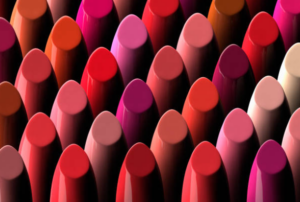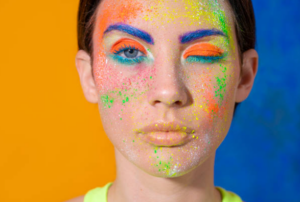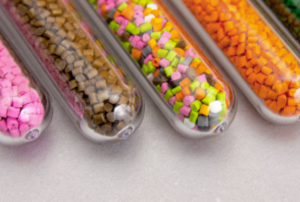Debunking Myths and Addressing Safety Concerns

In recent years, the beauty industry has been no stranger to controversy, with debates raging over various products and practices. One such topic that has stirred up conversations is the use of lake dyes in cosmetics. While concerns about the safety and ethics of these dyes are valid, it’s essential to separate fact from fiction and have a balanced understanding of their use. In this blog, we’ll delve deep into the world of lake dyes, debunk myths, and address safety concerns.
Lake dyes are a class of color additives used extensively in the cosmetics industry to provide vibrant and long-lasting color to various products. These additives are used in a wide range of cosmetics, including lipsticks, eyeshadows, blushes, and nail polishes. The term “lake” refers to the type of colorant formed through a specific process involving the combination of water-soluble dyes with insoluble materials.
The process of creating lake dyes is a combination of art and science, resulting in colorants that offer stability, versatility, and intense pigmentation. The production process involves several steps:
- Water-Soluble Dyes: The journey begins with water-soluble dyes, which are often derived from synthetic sources. These dyes are selected for their vivid colors and suitability for cosmetic use.
- Precipitation: The water-soluble dye is mixed with a metal salt, typically an aluminum salt. This mixture is then precipitated onto a substrate material, which is usually a mineral or a natural material such as calcium carbonate.
- Filtration and Washing: After precipitation, the mixture is filtered to separate the solid dye from the liquid solution. The solid material is then washed to remove any impurities.
- Drying and Milling: The washed and filtered material is dried and ground into a fine powder. This powder is what eventually becomes the lake dye.
Myth 1: Lake Dyes Are Unsafe for Use
The perception that lake dyes are unsafe for use in cosmetics is a misconception that has persisted despite the rigorous safety evaluations conducted by regulatory agencies. It’s essential to delve into the regulatory process and scientific research to debunk this myth and gain a clearer understanding of the safety of lake dyes.
Lake dyes, like all color additives used in cosmetics, are subject to thorough safety assessments by regulatory bodies such as the U.S. Food and Drug Administration (FDA) and the European Medicines Agency (EMA). These agencies have established strict guidelines and safety standards for the use of color additives in cosmetics to ensure consumer safety.
The safety assessment process involves a comprehensive review of scientific data, toxicological studies, and potential risks associated with the use of the color additives. These evaluations aim to determine whether the use of a color additive, including lake dyes, poses any health risks to consumers.
Scientific research plays a pivotal role in determining the safety of color additives. Toxicological studies are conducted to assess the potential adverse effects of these additives on human health. These studies involve various testing methodologies, including in vitro tests, animal studies, and human patch tests.
Researchers assess a range of factors, including acute toxicity, skin sensitization, eye irritation, and carcinogenicity. These studies provide valuable insights into the potential risks associated with the use of color additives and help establish safe usage levels.
One critical aspect of color additive safety is the determination of safe usage levels. Regulatory agencies establish maximum permissible concentrations of color additives in cosmetic formulations to ensure that they do not pose a threat to consumer health. These limits are based on extensive research and take into account potential exposure through normal cosmetic use.

Cosmetic manufacturers are required to adhere to these established limits when formulating products that contain color additives such as lake dyes. This ensures that the concentration of color additives remains well below levels that could potentially pose a health risk.
The stringent safety assessments and regulations in place provide consumers with a level of confidence in the safety of cosmetic products containing lake dyes. However, it’s important to note that individuals with specific sensitivities or allergies may still experience adverse reactions to certain color additives.
To address individual concerns, patch testing is a valuable tool. Applying a small amount of the product to a small area of skin and monitoring for any adverse reactions can help identify potential issues before using the product more extensively.
Myth 2: Lake Dyes Are Always Derived From Harmful Sources
The misconception that lake dyes are always sourced from harmful or unethical origins stems from a lack of awareness about the diversity of colorant production methods and advancements in the cosmetics industry. While some historical colorants may have been derived from sources with questionable ethics, the majority of lake dyes used in cosmetics today are synthetically produced and adhere to modern ethical and sustainability standards.
In the past, certain natural sources were used to create colorants, and some of these sources had ethical or environmental concerns associated with them. For example, the use of certain animal-derived colorants raised ethical questions about animal welfare. Additionally, some natural sources were unsustainable or environmentally damaging.
However, the cosmetics industry has evolved significantly over the years. Advances in technology and scientific understanding have led to the development of synthetic colorants that provide consistent quality, stability, and ethical viability.
Modern lake dyes are predominantly synthetically produced. Synthetic colorants offer several advantages over natural sources:
- Consistency: Synthetic production ensures consistent color purity and quality, which is essential for achieving predictable and desirable cosmetic shades.
- Stability: Synthetic colorants are more stable and less prone to degradation compared to certain natural sources. This stability contributes to the longevity of color in cosmetic products.
- Sustainability: Synthetic production methods can be more environmentally sustainable than sourcing colorants from natural resources. By reducing the demand for certain natural sources, the industry can minimize the impact on ecosystems.
Ethical concerns surrounding colorants have prompted the cosmetics industry to shift toward more responsible practices. Cosmetic brands are increasingly conscious of ethical considerations and strive to ensure that their products are sourced and manufactured in ways that align with modern ethical standards.

Myth 3: Lake Dyes Are Cruelty-Inducing
The misconception that lake dyes are inherently linked to cruelty-inducing practices arises from concerns about animal testing in the cosmetics industry. While historical practices did involve animal testing, the cosmetics industry has made significant strides in adopting cruelty-free testing methods, including those related to lake dyes.
Animal testing in the cosmetics industry has been a contentious issue for many years. However, due to increased awareness and advocacy, the industry has undergone a transformation. Many cosmetic brands have transitioned away from traditional animal testing methods and adopted cruelty-free alternatives.
This transition has been driven by both consumer demand for ethical products and advancements in alternative testing methods that do not involve animals. Regulatory agencies such as the U.S. Food and Drug Administration (FDA) and the European Medicines Agency (EMA) also encourage the use of non-animal testing methods whenever possible.
The cosmetics industry now employs a variety of alternative testing methods to assess the safety of cosmetic ingredients, including lake dyes. These methods include in vitro testing (testing on cells or tissues outside of the body), computer modeling, and human volunteer studies. These alternatives provide accurate and reliable safety data without causing harm to animals.
For lake dyes, skin irritation tests, patch tests, and other non-animal methods are used to evaluate potential allergic reactions and other adverse effects. These tests are designed to ensure the safety of cosmetics while minimizing harm to animals.
Regulatory agencies have also played a role in promoting cruelty-free testing practices. In the European Union, for example, animal testing for cosmetics has been banned since 2013. The FDA also supports the development and use of alternative testing methods and has worked to reduce animal testing.

Addressing Safety Concerns
While the safety of lake dyes is well-regulated, it’s crucial for consumers to be informed about the products they use. Transparency in ingredient labeling allows consumers to make informed choices based on their preferences and potential sensitivities.
For individuals with specific sensitivities or concerns, patch testing can be a valuable tool. Applying a small amount of the product to a small area of skin and monitoring for any adverse reactions can help identify potential issues before using the product more extensively.
The controversy surrounding lake dyes underscores the importance of strong regulation, transparent labeling, and consumer education. As consumers, we have the right to know what goes into the products we use and to make choices aligned with our values and priorities. Regulatory agencies play a vital role in ensuring that cosmetic products are safe for use, and manufacturers are responsible for upholding these standards.
It’s equally important for consumers to seek out reliable and evidence-based information about cosmetic ingredients. Misinformation can perpetuate unnecessary fear and confusion. By understanding the science behind cosmetic formulations, we can make informed decisions and advocate for responsible practices within the beauty industry.
In conclusion, the controversy over lake dyes is a reminder of the complexities within the beauty industry. While valid concerns exist, it’s essential to approach these discussions with a balanced perspective, separating fact from fiction. With stringent regulations, increased transparency, and consumer education, we can navigate the cosmetic landscape with confidence and make choices that align with our values and well-being.




